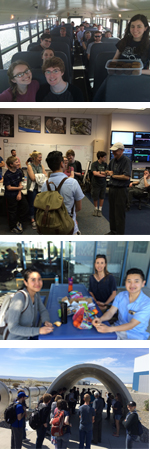 On September 14, 2015, the twin Laser Interferometer Gravitational-wave Observatory (LIGO) detectors in Hanford, Wash. And Livingston, La., observed gravitational waves for the first time in human history. The detection of these ripples in space-time confirm a proposal by Albert Einstein in 1916, in which he predicted that the space-time continuum may be “bent” when acted on by the force of gravity.
On September 14, 2015, the twin Laser Interferometer Gravitational-wave Observatory (LIGO) detectors in Hanford, Wash. And Livingston, La., observed gravitational waves for the first time in human history. The detection of these ripples in space-time confirm a proposal by Albert Einstein in 1916, in which he predicted that the space-time continuum may be “bent” when acted on by the force of gravity.
100 years later, the Gonzaga University Science Club took 31 Zags to experience LIGO at Hanford. The GU Science Club also hosts annual Pi Day celebrations every March 14 (complete with delicious pies for everyone), several Science Days featuring fun science activities throughout the year, and has even joined forces with other clubs—like the Harry Potter Club, providing scientific insights into chemical reactions and “potions.”
Your support for the Fund for Gonzaga has an impact on clubs just like this that offer opportunities for learning, fellowship, support and growth, making up a complete Gonzaga experience. Thank you!
